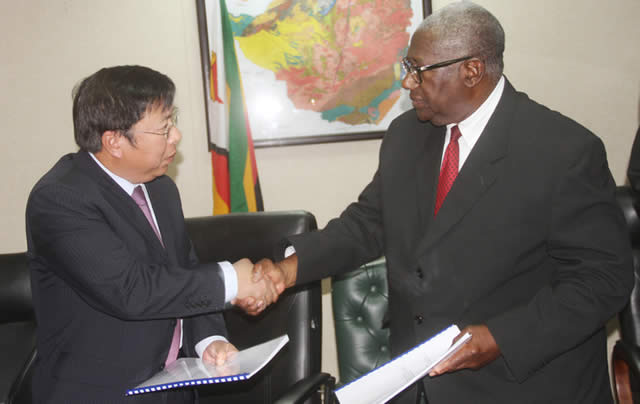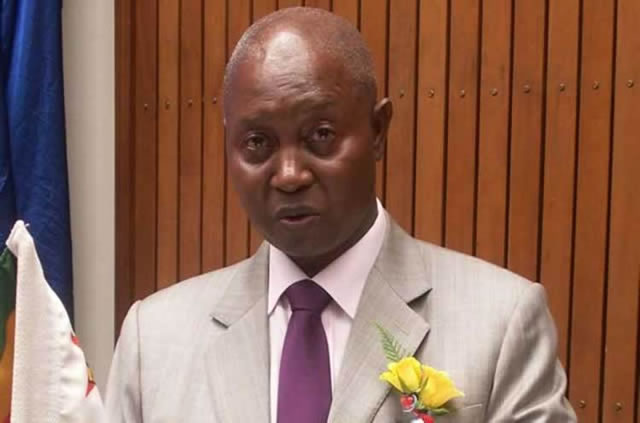ZMDC, Chinese investor sign $102m agreement…Kamativi set for revival


ZMDC board chairman Mr David Murangari (right) and Beijing Pingchang Investments chief representative in Zimbabwe Shouming Lin shake hands after the signing of the Kamativi Tin Mine deal yesterday
Harare Bureau—
THE resuscitation of operations at disused Kamativi Tin Mine in Hwange District inched a step-closer yesterday after the Zimbabwe Mining Development Corporation (ZMDC) and a Chinese company – Beijing Pingchang Investments signed a Joint Venture Agreement. Beijing Pingchang Investments will invest $102 million into the mine that stopped operations in 1994 with indications that it has reserves amounting to 100 million tonnes.
The Chinese company takes up 49 percent while the government through its mining arm, ZMDC retains the controlling stake of 51 percent in line with the country’s indigenisation policy. ZMDC board chairperson, David Murangari signed on behalf of ZMDC while Beijing Pingchang Investments chief representative in Zimbabwe, Shouming Lin signed on his company’s behalf.
Speaking to the media after the signing ceremony, Murangari said the development signified a positive start towards resuscitating operations at Kamativi. “The signing of this agreement on Kamativi means that after 20 years of dormancy on the mine, we now anticipate to get some work, which will lead towards resuscitation of the mine and bring it back to life,” he said.
“This is what the signing ceremony has indicated. We anticipate that after 90 days or so then things will start happening on the ground. But you’ve to understand that if a mine has been dormant for that long things are not going to be switched on immediately, there is a period of at least two years before any meaningful production resumes.
“What we can only say right now is that we’ve started, this is the first step. From here, we now have to accelerate the pace so that we can eventually get the mine re-commissioned and get back to production.” Shouming said his company has business interests in Africa, Asia and Latin America and was excited to see its global equity grow.
He hailed the bilateral relations between Zimbabwe and China saying both countries stood to benefit from engaging each other.
“We’re very happy that now Zimbabwe Kamativi Tin Mine is one of our biggest projects in Africa and in the world. “It’ll take us three to five months to bring our equipment and our engineers,” said Shouming. “First we have to do survey, which is a bigger project it’ll take a lot of time and engineers to do that survey first. The deal means that Zimbabwe Kamativi Tin Mine becomes one of our big projects and it’s our small contribution to Zimbabwe. We hope that both the Chinese people and Zimbabwean people will benefit.”
Mines and Mining Development Minister Walter Chidhakwa recently said under the deal, the Chinese firm would be mining tin, lithium, tantalite, beryl, copper and beryllium and would also set up a refinery at the mining site for the minerals. Minister Chidhakwa added that the deal would also see the government evaluating the value of the dump at the mining site that would also be sold to Beijing Pingchang Investments as part of the agreement.
The mine was opened in 1936 and shut down in 1994 after international tin prices fell to levels that rendered operations unviable. At the time of its closure, the mine employed 800 people.










Comments